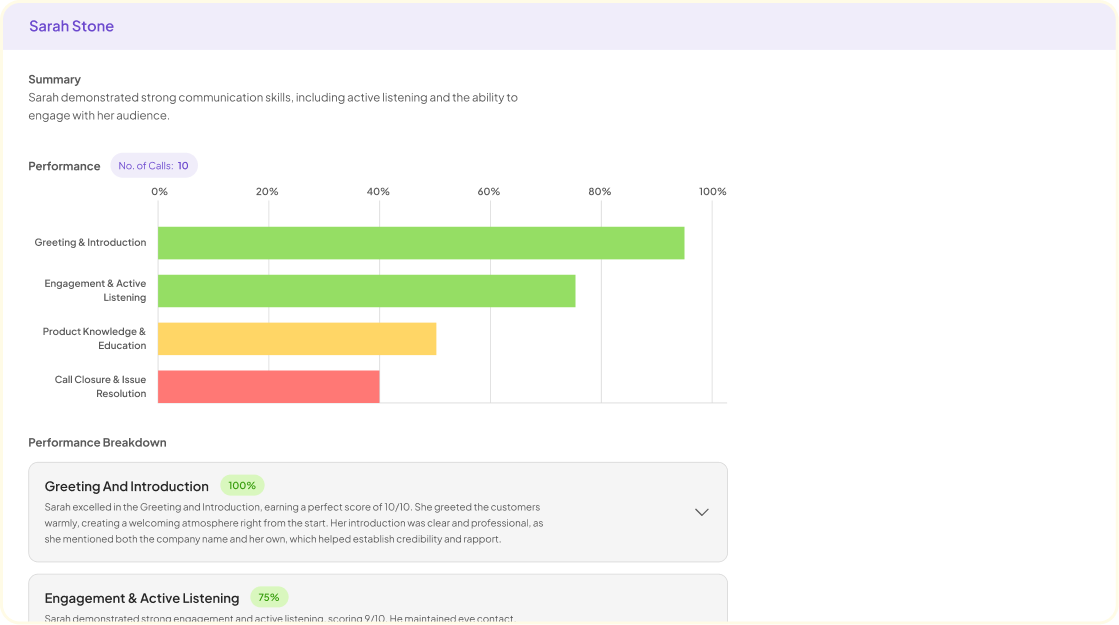Holistic Experience Design is about creating a seamless connection between different aspects of customer interaction. Picture a journey where every touchpoint, from digital interfaces to customer service, feels consistent and purposeful. This approach emphasizes understanding users' needs in a comprehensive way, ensuring that every experience feels integrated rather than fragmented.
At its core, Holistic Experience Design merges UX, CX, and service design principles to deliver cohesive solutions. By examining how these disciplines intersect, designers can foster deeper engagement and trust with users. Ultimately, the goal is to produce outcomes that resonate with customers, encouraging loyalty and long-term relationships.
Understanding Holistic Experience Design
Holistic Experience Design focuses on the comprehensive interplay between User Experience (UX), Customer Experience (CX), and Service Design. It emphasizes creating a seamless journey that caters to the actual needs and emotions of users across all touchpoints. Understanding this interconnected approach allows designers to craft experiences that are not only efficient but also engaging and memorable.
To grasp Holistic Experience Design, one should consider these three key aspects:
User Research: Gathering insights about user behaviors and preferences is foundational. It informs the design decisions and ensures the experiences resonate deeply with individuals.
Empathy Mapping: This involves visualizing the user’s journey, aligning it with their emotions, and identifying pain points. Recognizing these aspects leads to more user-centered services.
Cross-Disciplinary Collaboration: Effective design integrates various specialties, encouraging teamwork among UX designers, marketers, and service managers. By working together, they can create cohesive experiences that align with business goals and user expectations.
Such an approach not only improves user satisfaction but also fosters brand loyalty and advocacy.
Defining User Experience (UX)
User Experience (UX) encompasses the overall experience a user has when interacting with a product or service. It involves understanding their needs, preferences, and emotions throughout the entire engagement process. With a focus on Holistic Experience Design, UX prioritizes creating intuitive interactions that foster satisfaction and usability. This methodology integrates various disciplines, including psychology, design, and technology, to ensure every touchpoint is seamless and enjoyable.
When defining UX, several key elements emerge. First, user research plays a crucial role, as it informs design decisions and uncovers user behaviors. Second, usability emphasizes how easily users can navigate and utilize a product. Third, emotional engagement involves creating connections that resonate with users. By addressing these factors, organizations can enhance the overall user experience, leading to better customer satisfaction and loyalty. Thus, understanding UX is essential for effective service design and customer experience efforts.
Exploring Customer Experience (CX)
Customer Experience (CX) is a critical element that shapes how consumers perceive brands and their offerings. It encompasses every interaction a customer has with a business, from the initial point of contact to after-sales support. A well-crafted CX can enhance customer loyalty and drive positive word-of-mouth, making it essential to focus on holistic experience design.
To achieve excellence in CX, several key aspects must be considered. First, understanding customer needs helps in creating relevant touchpoints that resonate with audiences. Second, effective data analysis enables organizations to identify pain points and opportunities for improvement. Third, fostering a culture of continuous feedback ensures businesses adapt to changing customer preferences. Finally, integrating multiple departments allows for a seamless experience, ensuring that the customer journey is fluid and cohesive. By prioritizing these elements, businesses can create memorable interactions that foster loyalty.
The Intersection of UX and CX in Holistic Experience Design
Holistic Experience Design combines User Experience (UX) and Customer Experience (CX) to create a seamless journey for users. By integrating UX and CX, designers can ensure that every touchpoint enhances the overall experience. This intersection prioritizes the needs and emotions of users, leading to greater satisfaction and loyalty.
To achieve effective Holistic Experience Design, three key factors come into play:
- Understanding User Needs: Both UX and CX must begin with a deep understanding of user research. Identifying pain points and desires helps tailor solutions effectively.
- Consistent Messaging: Communication should remain coherent across all platforms. Consistency strengthens brand identity and fosters trust.
- Feedback Loops: Continuous feedback from users is crucial. Iteration based on user insights ensures experiences evolve with changing preferences.
Through this integration, organizations can create experiences that resonate deeply with their audiences, driving engagement and business success.
Aligning UX and CX Strategies
Aligning User Experience (UX) and Customer Experience (CX) strategies is essential for crafting a truly impactful Holistic Experience Design. Both disciplines share a goal: enhancing the satisfaction and engagement of users throughout their journey. By synchronizing efforts, organizations can ensure that every touchpoint—from initial awareness to after-sales support—reflects a cohesive brand message and quality.
To achieve alignment, consider the following tenets:
- Understanding User Needs: Emphasizing research to grasp user expectations helps create relevant experiences.
- Consistent Messaging: Ensuring that communications across platforms align fosters trust and recognition.
- Cross-Functional Collaboration: Involving diverse teams from UX, CX, and service design enables multifaceted insights.
- Feedback Loops: Regularly collecting and analyzing user feedback drives continual improvements.
- Empathy-Driven Design: Observing real-world interactions informs more meaningful design choices.
By intertwining UX and CX strategies, businesses can build a system that enriches the user experience while cultivating customer loyalty. This holistic approach not only enhances usability but also strengthens emotional connections with the brand.
Measuring Success in Holistic Experience Design
Holistic Experience Design emphasizes a comprehensive approach that integrates various elements of user experience (UX), customer experience (CX), and service design. To effectively measure success in this area, organizations should consider both quantitative and qualitative metrics. Quantitative metrics may include conversion rates, customer acquisition costs, and satisfaction scores. These data points provide objective insights into performance and offer clear benchmarks for improvement.
Qualitative measures, on the other hand, capture user sentiment and feedback, revealing deeper insights into user needs. Conducting regular surveys can uncover ‘aha’ moments that highlight areas needing attention. Furthermore, establishing key performance indicators (KPIs) specific to different phases of the experience journey ensures a well-rounded assessment. This dual approach not only tracks progress but guides teams toward making informed adjustments to enhance overall effectiveness in Holistic Experience Design.
Integrating Service Design into Holistic Experience Design
Integrating service design into holistic experience design involves a collaborative approach that harmonizes various disciplines. This synergy enhances how organizations meet customer needs and expectations. By focusing on every touchpoint within a service journey, we can craft experiences that resonate at a deeper level. Each interaction, from initial contact to post-service engagement, must be purposefully designed to maximize user satisfaction.
Key elements of successful integration include understanding user journeys, employing iterative feedback, and fostering cross-functional teamwork. Understanding user journeys allows designers to identify moments that can delight customers or create friction. Iterative feedback ensures that services evolve according to real-world usage, which improves overall effectiveness. Lastly, fostering cross-functional teamwork promotes diverse insights, enriching the design process. By intertwining service design with holistic experience design, organizations create seamless and engaging customer experiences that stand out in today's competitive environment.
The Role of Service Design in Enhancing UX and CX
Service design plays a pivotal role in creating a seamless interplay between user experience (UX) and customer experience (CX). It focuses on understanding the needs and behaviors of users while considering the broader organizational context. By integrating service design principles into UX and CX strategies, businesses can create a holistic experience that addresses pain points and enhances satisfaction. This comprehensive approach fosters better engagement and loyalty while minimizing friction in user interactions.
In this context, several key elements emerge. First, empathy-driven research is vital for understanding the perspectives of users. Secondly, iterative prototyping allows teams to test and refine services based on real user feedback. Lastly, cross-functional collaboration ensures that insights from UX, CX, and service design are shared, creating more coherent and effective strategies. Together, these elements contribute to an overarching goal: delivering a unified, holistic experience that resonates with users and customers alike.
Tools and Methods for Effective Service Design
Effective service design requires a blend of tools and methods that ensure a holistic experience design. Understanding customers' needs through research is vital. Techniques such as user journey mapping and service blueprints can illuminate interactions at each touchpoint. These visual tools help identify areas for improvement and ensure that the service meets user expectations.
Moreover, qualitative methods like interviews and focus groups facilitate deeper insights into customer sentiments. Utilizing feedback loops helps teams remain adaptable and responsive to customer input. Additionally, prototyping and A/B testing allow for experimentation, ensuring that design choices resonate well with the audience. By employing these varied approaches, organizations can create comprehensive experiences, aligning UX, CX, and service design as seamless components of the customer's journey.
Conclusion: The Future of Holistic Experience Design
As we look to the future of Holistic Experience Design, it's clear that a unified approach to UX, CX, and service design will become increasingly essential. Users are seeking seamless, integrated experiences that resonate emotionally and functionally, and designers must adapt to meet these evolving expectations. Emphasizing collaboration among these disciplines will spark innovation and create cohesive journeys that delight customers at every touchpoint.
In this interconnected future, data-driven insights and empathy will serve as guiding principles. By focusing on the holistic needs of users, businesses can cultivate deeper relationships and foster loyalty. The alignment of UX, CX, and service design not only enhances customer satisfaction but also drives meaningful outcomes for organizations. Embracing this holistic perspective will be key in navigating the complexities of tomorrow's marketplace.


